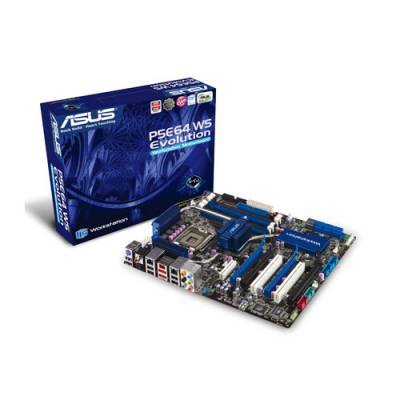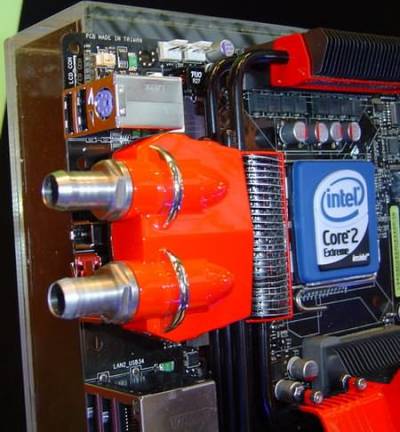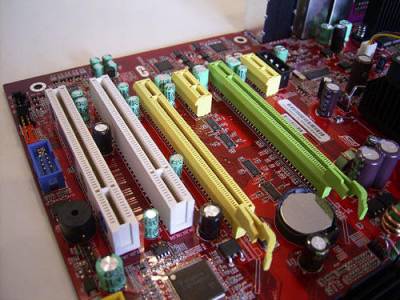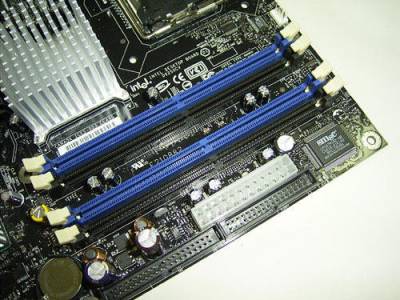Chitika
Mainboard
What is your motherboard?
System (aka - the parent), the board is a key element of any modern computer and unites almost all of the devices included in it. The basis of the motherboard is a set of core chips, also called core logic chipset, or (more about him - below). Type of chipset, which is based motherboard that fully defines the type and number of components that make up the computer, as well as its potential.
System (aka - the parent), the board is a key element of any modern computer and unites almost all of the devices included in it. The basis of the motherboard is a set of core chips, also called core logic chipset, or (more about him - below). Type of chipset, which is based motherboard that fully defines the type and number of components that make up the computer, as well as its potential.
The system board also includes:
DIMM slots for memory module type SDRAM/DDR/DDR2 (different for each type of memory). Usually they are 3-4, although the compact motherboards can be found only two such slots;
specialized connector AGP or PCI-Express x16 graphics card installation. However, in recent times, with outbursts of indiscriminate transfer to the latter type of video interface, very often there are boards with two or even three video connectors. Also found in the system board (the cheapest), without video jacks at all - their chipsets have integrated graphics core and the external graphics card for them is optional;
next to the slot for graphics cards are usually slots for optional expansion card standard PCI or PCI-Express x1 (previously seen more slots and ISA, but now these boards - museum piece);
The following fairly important group of connectors - interfaces (IDE and / or the more modern Serial ATA) to connect hard drives - hard drives and optical drives. Also, there is still a connector for floppy-disk drive (3.5 "floppies), although all goes to the fact that from it will soon finally be abandoned. All disk drives connected to the motherboard with the help of special cables, in speech as called "trails";
close to the CPU are connectors for power (usually of two types - 24-pin ATX and 4-pin ATX12V for additional +12 V line) and two-, three-or four-phase voltage regulator module VRM (Voltage Regulation Module), consisting of power transistors, inductors and capacitors. This module converts, filters and stabilizes the voltage from the power supply podavaemyee;
rear panel of the motherboard has connectors for connecting additional peripherals - monitor, keyboard and mouse, network, audio and USB-devices, etc.
In addition to these slots and ports on any system board has a large number of additional jumpers (jumpers) and connectors. It could be contacts to connect the system dynamics and the buttons and LEDs on the front panel, and connectors for the fans, and terminal blocks for connecting additional audio jacks and USB and FireWire.
What size are motherboards?
Motherboards, in addition to functionality, different from each other yet, and size. These sizes are standardized and are called form factors (Table 1): Form Factor Board Size, Board Size mm mm
ATX 305 x 244
eATX 305 x 330
Mini-ATX 284 x 208 for small enclosures
Micro-ATX 244 x 244 for small enclosures
Mini-ITX 170 x 170 for the ultra-PC
Nano-ITX 120 x 120 for ultrasmall PCs
Electronic equipment
Take the motherboard in your hands and see if the north bridge (a big chip, adjacent to the processor) a fan, send it to / dev / nul, not waiting until the fan fails (and it always will, and soon enough) , causing overheating of the northbridge and wild bugs, often with loss of data. Moreover, given the tendency of manufacturers to use non-standard fans, "resuscitation" fee from the trivial transplant surgery, "Carlson" is transformed into a major engineering task that requires skills in working with metal. It is best to choose a model with passive cooling, ie the radiator without the fan.



